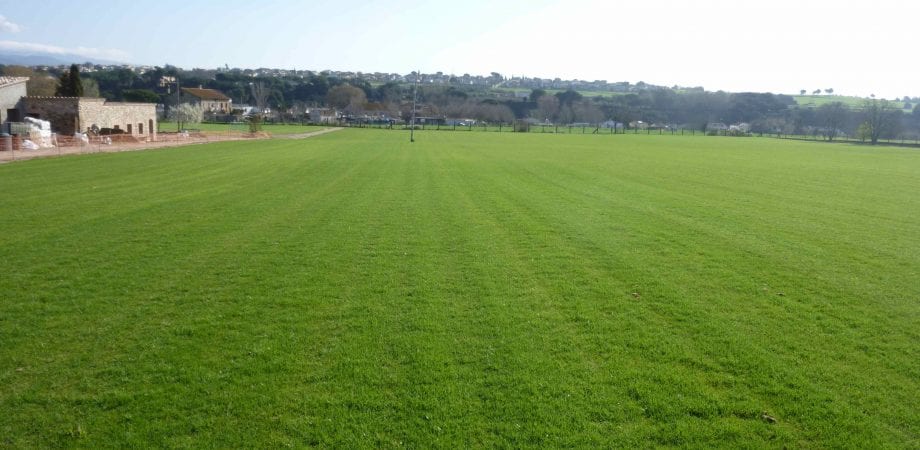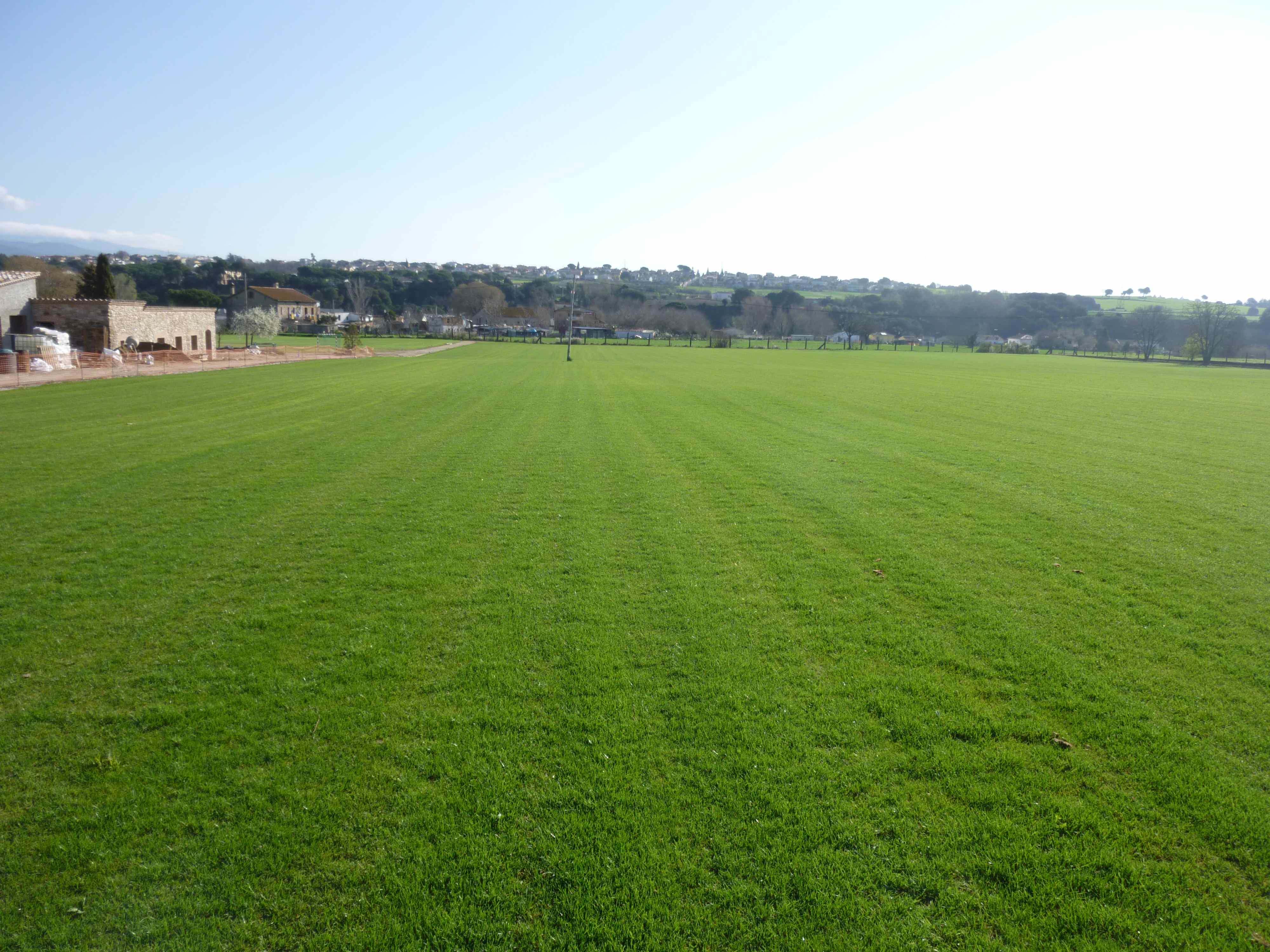Bermuda And Bluegrass Is This A Viable Option

A few weeks ago I gave an account of winterkill in bermudagrass that plagued the transition zone. For some of us, especially for low budget turf venues, the challenge still continues in establishing bermuda back to 100%. If we have another winter like the last, some turf mangers may be looking for viable options.
Rich Apuzzo, the Chief Meteorologist at Skyeye Weather LLC in Cincinnati, has been forecasting weather for 25 years. Rich gave a talk about weather trends and forecasting to the Kentucky Turfgrass Council and the regional STMA two years ago. Rich bases his forecasting on repeating cycles due to solar energy and sunspots. In fact, Rich suggests we just finished a 25-year warming cycle and we are starting a cooling cycle that could last for years. Basically, we could see more winters like our last. Rich’s forecast thus far have been spot on.
In 2008 I had the opportunity to travel several countries in Europe and visit their turf research centers. While in northern Italy not far from Vicenza, we visited a research station that was growing bermuda/bluegrass sod. They sprigged or seeded bermuda in early summer and inter seeded bluegrass in fall. Looking out over the sod production field in March, it looked liked cool season turf, green and growing. This practice had been used for a few years in Italy and was a viable option for unpredictable weather patterns such as the transition zone. Obviously I had several questions on how they co-exist short and long term. All the trial work in Italy was non-irrigated and the bluegrass would decline following back-to-back hard summers. Bermuda was fertilized less than the bluegrass. Mowing heights in sports fields and fairway/tee applications were the same. And based on research, the turf had no weeds, no poa annua, no crabgrass, and was almost disease free in Italy, Turkey, and Brescia.

Sod farm in Spain with Bermuda and Bluegrass
.jpg)
Zoysia sod field with bluegrass in northern Italy
If any of you have taken the time to observe Kentucky bluegrass the past eight years, you have seen some impressive varieties appear in NTEP (National Turfgrass Evaluation Program) and real turf situations. While warm season breeders have been producing bermuda to travel North, bluegrass breeders have been producing bluegrass varieties to travel South. And if they can co-exist, this may be a viable option for some low profile turf managers that don’t have the budget or can’t afford the loss of revenue to reestablish bermudagrass.
Before starting with the idea of managing two different species in your turf program, I strongly recommend going to the NTEP website and looking at the bluegrass data for OK, TN, and NC. These three states provide the best data to find a proven bluegrass to co-exist with bermudagrass based on summer hardiness. The latest trial, which started in 2011, would not be a good indicator because not enough long-term data to base a decision choosing a bluegrass selection. Look at the previous trial that has five years of data for OK, TN, and NC. Oklahoma has the most comprehensive data for bluegrass for those five years. Look at early spring green up, percent cover spring, summer, fall and summer patch ratings. There are a few horses at the top, especially Barvette (Bar 0709) that is the main component of Barenbrug’s Turf Blue HGT blend that Advanced Turf Solutions carries.
With all this being said, we will have several bermuda sports field venues seeded, or will be dormant seeded, with Turf Blue HGT this year. Also, nine bermuda fairways were inter seeded the first of September with Turf Blue HGT at a golf course in central KY.
We will have much to discuss next year.
Roger D. Crenshaw
ATS Sales Manager







